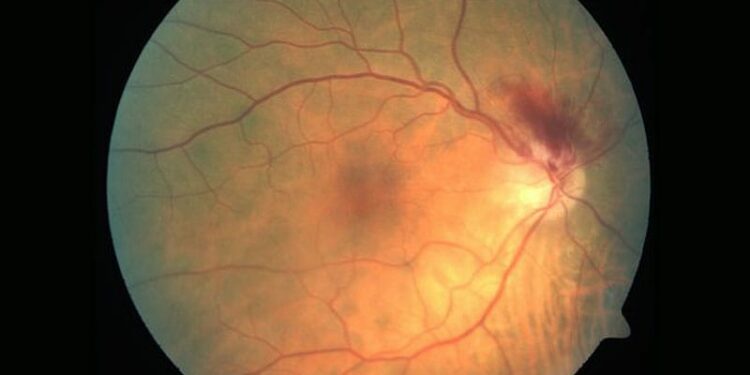[ad_1]
TOPLINE:
At least nine patients using the glucagon-like peptide 1 (GLP-1) receptor agonists semaglutide and tirzepatide developed ophthalmic complications, of whom seven had nonarteritic anterior ischemic optic neuropathy (NAION), according to a case series. Researchers hypothesize that rapid correction of hyperglycemia induced by these drugs may be associated with the eye disorders.
METHODOLOGY:
- Researchers reported on nine patients (mean age, 57.4 years; 56% women) who developed ophthalmic complications while using semaglutide (n = 6) or tirzepatide (n = 3).
- All patients were initially seen in a community setting and had never used GLP-1 drugs or any other medications associated with optic neuropathies or retinopathies within the year before the onset of symptoms.
- The patients had a history of type 2 diabetes, hyperlipidemia, hypertension, and/or sleep apnea.
- Analysis included visual acuity measurements and visual field defect assessments as main outcome measures.
TAKEAWAY:
- While receiving treatment with semaglutide or tirzepatide, seven patients developed NAION, one patient developed bilateral papillitis, and one developed paracentral acute middle maculopathy.
- Among the seven patients with NAION, some experienced atypical symptoms such as sequential ION, swelling of the optic nerve head in both eyes at presentation, and progressive loss of vision.
- The single patient who developed bilateral diabetic papillitis with semaglutide therapy did not end up losing vision and continued receiving the GLP-1 agent.
- The researchers hypothesized that rapid correction of hyperglycemia induced by these drugs, rather than direct toxicity of the medications, could be associated with the reported ophthalmic complications.
IN PRACTICE:
“The [American Academy of Ophthalmology] has not recommended that patients stop using semaglutide, but rather, that patients experiencing vision loss while taking semaglutide should stop the drug and contact the physician prescribing the medication,” the authors of the study wrote. Clinicians who prescribe GLP-1 drugs to their patients with diabetes “should consider a drug regimen that more gradually lowers the A1c level,” they added.
“It is estimated that by 2030, 30 million GLP-1 RA prescriptions will have been dispensed in the US. Despite the rarity of NAION, the large number of users of these drugs can translate to a significant number of NAION cases. Future epidemiologic studies with robust methods are urgently needed to accurately quantify this risk,” experts wrote in an accompanying editorial.
SOURCE:
This study was led by Bradley J. Katz, MD, PhD,of the John A. Moran Eye Center, Department of Ophthalmology & Visual Sciences,University of Utah Health, Salt Lake City, Utah. It was published online on January 30, 2025, in JAMA Ophthalmology.
LIMITATIONS:
This study was limited by the absence of a control group, potential selection bias, and reliance on historical data, which may have resulted in incomplete information and a diminished capacity to establish causality. A risk for confirmation bias existed because the study was initiated after a single case of NAION was found to be associated with semaglutide use.
DISCLOSURES:
This study was supported by an unrestricted grant from Research to Prevent Blindness to the Department of Ophthalmology and Visual Sciences, University of Utah, and to the Department of Ophthalmology, University of West Virginia. Some authors declared receiving consultancy fees, grants, advisory board fees, personal fees, and other ties with several pharmaceutical companies and institutions.
This article was created using several editorial tools, including AI, as part of the process. Human editors reviewed this content before publication.
[ad_2]
Source link : https://www.medscape.com/viewarticle/eye-complications-found-use-semaglutide-tirzepatide-2025a100032f?src=rss
Author :
Publish date : 2025-02-07 07:05:19
Copyright for syndicated content belongs to the linked Source.














